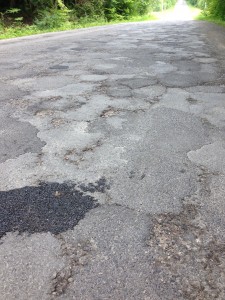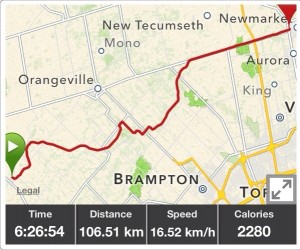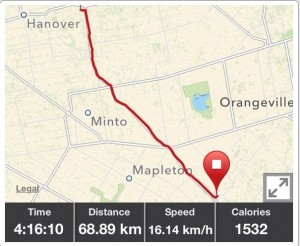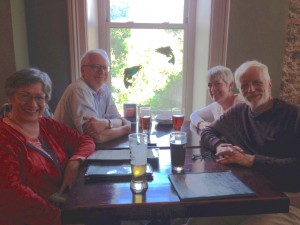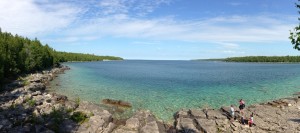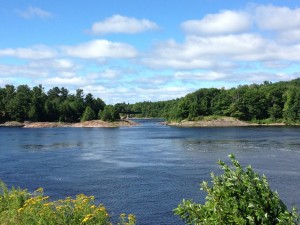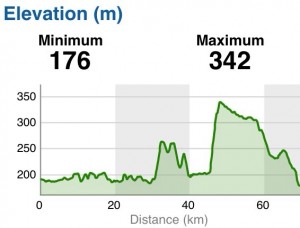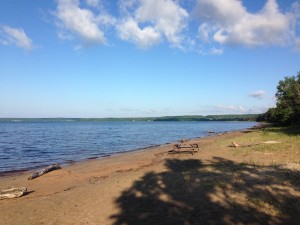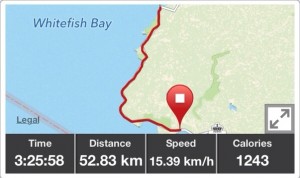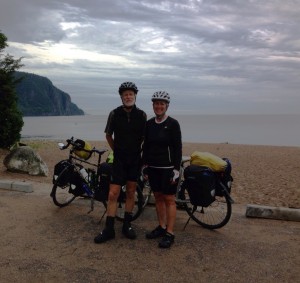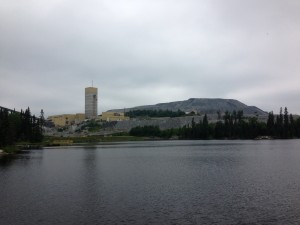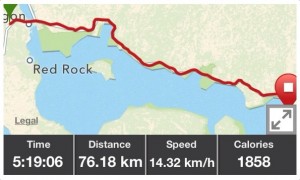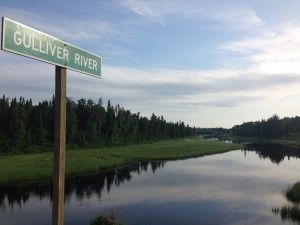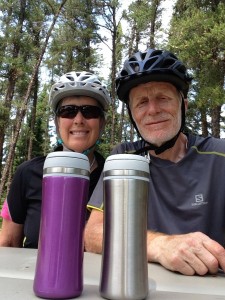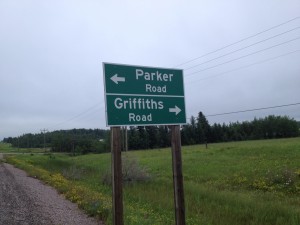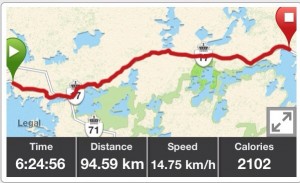We are now so used to rising early that it is difficult to sleep in on a day off. It also didn’t help that someone’s motorcycle was idling outside our motel window. Although we found breakfast at 8am, we had to cycle around Perth and then wait in the park at the feet of a statue of Big Ben, Ian Miller’s championship horse, for the coffee shop, Coutts and Co., to open at 10! While having coffee, a local resident, who owns an antique furniture store here, came over to chat with us about our trip and offered us the use of his home as he and his wife were leaving on a trip to Kentucky. We told him that we were waiting to check into the Perth Manor Hotel, but very much appreciated his gesture to two complete strangers!
Perth is a well preserved town with many stone buildings from the 1800’s. The Tay Canal starts here, which joins up with the Rideau Canal, and was important for commerce in the past. We both recall being by the locks at the other end, not far away, where there are a number of osprey nests on which Paul banded young a number of years ago.
We wandered through the town looking at the historic architecture and dodging rain showers and later ate in a Mexican restaurant which overlooks the Tay River. Tomorrow we cycle to Ottawa.















